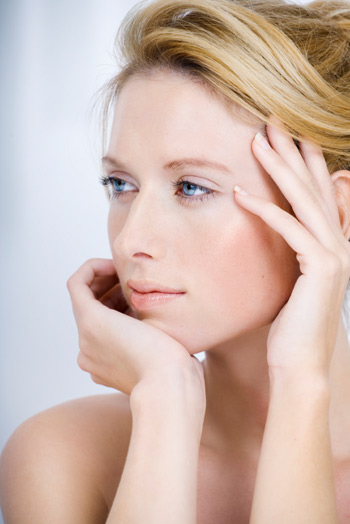Face Procedures
Botulinum Toxin – Botox®

Adults are living longer than ever before. We feel vital, we’re active and we want our bodies to mirror youthful minds and hearts. Enter botulinum toxin, one of the most important substances to hit the field of facial rejuvenation. Short of a surgical facelift, this substance is the most popular way to reduce facial wrinkles. Botulinum toxin can be used as a wrinkle treatment to smooth:
• Frown lines
• Crows feet
• Forehead furrows
• Skin bands on the neck
Smiling, frowning, squinting and even chewing – basically any facial movement can eventually lead to one of the most common signs of aging: wrinkles. They can make you appear tired or even angry when you are not. One of the quickest and safest remedies to remove wrinkles is an injection of botulinum toxin.
Botulinum toxin type A and botulinum toxin type B are both purified substances, derived from a bacteria. Injections of this substance blocks muscular nerve signals, which then weakens the muscle so that it can’t contract and diminishes your unwanted facial wrinkles.
Botulinum toxin can be combined with other cosmetic skin procedures such as chemical peels, dermal fillers or microdermabrasion to further improve your results. This combination of therapies can even help to prevent the formation of new lines and wrinkles.
The Procedure

Injections of botulinum toxin may seem like a simple procedure to you, since it’s just a few shots. But it’s actually both an art and science that only an experienced healthcare professional should do.
There are 43 muscles in your face and it’s vital that the person who performs botulinum toxin injections understands and pinpoints the correct spots to optimize your treatment.
A very thin needle is used to inject small amounts of botulinum toxin into specific muscles. By carefully choosing specific muscles, your healthcare provider weakens only the wrinkle-producing muscles, preserving your natural facial expressions.
Botulinum toxin treatment injections usually take less than 15 minutes. The number of injections you need will depend on multiple factors, including your facial features and the extent of your wrinkles. Crow’s feet, for example, usually demand two to three injections. Furrows above your brow could take five or more.
No anesthesia is required. There is no down time or recovery time.
You may notice results within a few days, but it can take up to a week to see the full effect. This improvement typically lasts about three to four months. When the effects of botulinum toxin begin to fade, your muscle reactions and the wrinkles will return.
Special Considerations, Risks

You may resume normal activities immediately. One note of caution: Don’t rub or massage the treated areas after the wrinkle treatment because it can cause the botulinum toxin to migrate to another area of your face. If this happens, you could have temporary facial weakness or drooping.
Although generally safe, side effects and complications can include:
- Bruising and pain at the injection site
- Redness
- Headache
- Flu-like symptoms
- Nausea
- Temporary facial weakness or drooping
- Very rarely, the toxin can spread beyond the treatment area, which can cause botulism-like signs and symptoms such as breathing problems, trouble swallowing, muscle weakness and slurred speech.
This procedural information is intended strictly for educational purposes. Only models are depicted in these procedural information pages. It is not intended to make any representations or warranties about the outcome of any procedure. It is not a substitute for a thorough, in-person consultation with a board certified plastic surgeon.
Questions to Ask
Be sure to ask questions, and don’t be shy about discussing any concerns.
- Am I a good candidate for Botulinum Toxin?
- What will be expected of me to get the best results?
- Who will perform the Botulinum Toxin injections?
- Have they been specifiaclly trained in this procedure?
- Where and how will you perform my procedure or treatment?
- How long of a recovery period can I expect?
- What are the risks and possible complications associated with my procedure?
- How can I expect to look over time?
- Do you have before-and-after photos I can look at for this procedure
- What results are reasonable for me?
